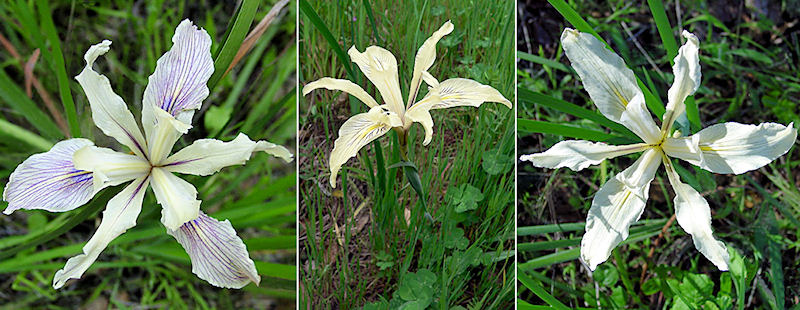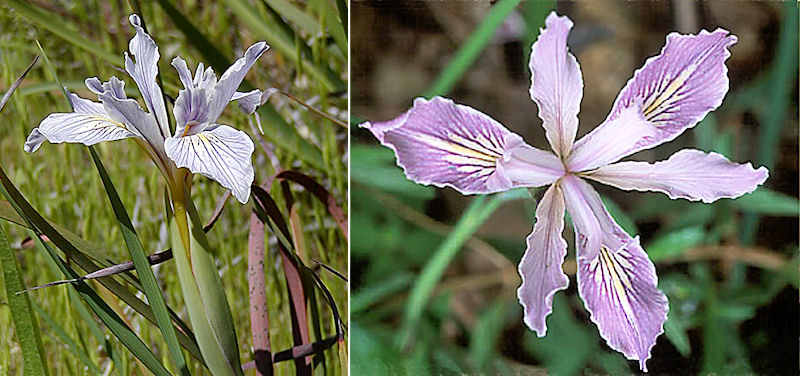Pacifica Irises Natural Hybrids
Trying to apply one specific name to an individual plant whose parents belong to different species is an exercise in frustration. Most Pacifica iris can interbreed. (They can even cross, experimentally, with some of the Siberian Irises - their probable Old World ancestors.)
You can often find natural hybrid PCIs in places where the ranges of different species overlap. In certain areas, hybrid populations may have existed for hundreds or even thousands of years, without evolving into fully distinct species of their own, or regressing back into the parent species. Much might depend on whether the original "parents" are still present nearby.
Here are two examples. Click on the numbered heading for a more specific discussion, or on the photographer's name in the caption to see the original images in their own respective online gallery.
1. "Marin Iris" and "Santa Cruz Iris": Central California's coastal forests.
The iris you'll most likely see in the shaded coastal woodlands north and south of California's Golden Gate is part of a long-established, but still evolving hybrid population involving three parental stocks: Fernald's Iris, Douglas Iris, and Bowl-tube Irises.

These "Santa Cruz irises" can be seen in Leonard Chung's online gallery of the wildflowers of Quail Hollow
Ranch County Park, north of Santa Cruz.
2. Bowl-tube Iris hybrids: Central California's inner grasslands.
The bowl-tube iris is widely distributed – in different places it contacts almost all the other central California iris species. Where their ranges and habitats overlap, along the edges you'll occasionally find hybrid plants.

Wild bowl-tube iris hybrids: (L) crossed with yellow-flowered Fernald's iris, Elarra Ranch, Mayacamas Range, Sonoma Co;
(R) crossed with cream-flowered Purdy's iris, Coastal Range above the north end of Lake Sonoma near the
Sonoma-Mendocino county line; photo by Reny Parker.